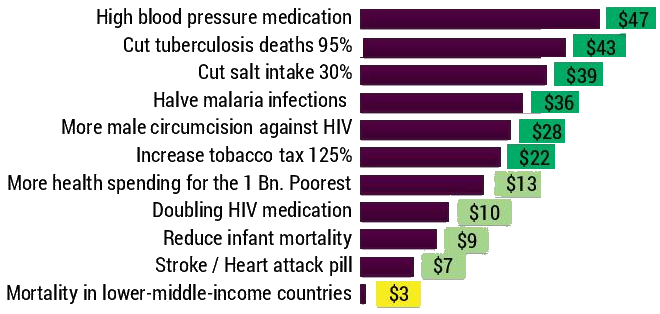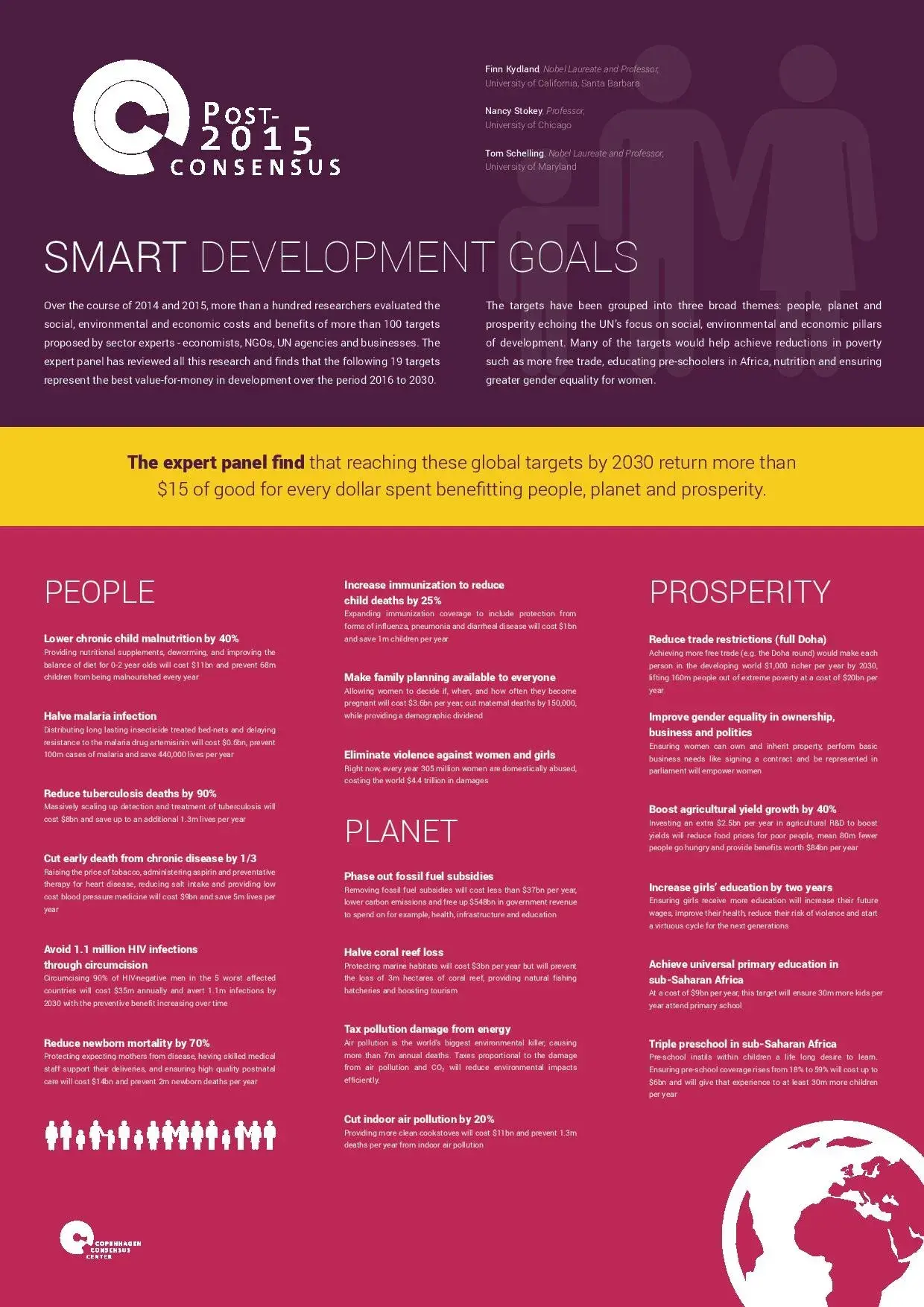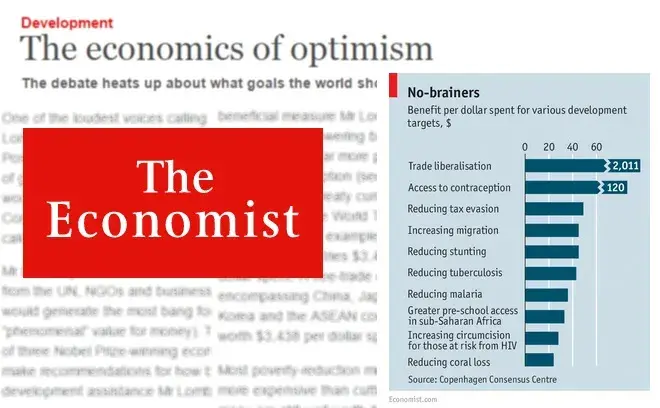Women and Children's Health: What's the smartest SDG target?

How can we improve women’s health and save more than 14m children from dying before 2030?
Turns out that if we focus on a target to reduce newborn mortality by 70%, we can by 2030 prevent 2m child deaths per year. Over the next 15 years this means saving about 14 million children. This will involve providing expecting mothers with nutrients and protection from disease, having nurses and clean facilities at birth, and then ensuring best practice child care techniques immediately after, such as ‘kangaroo care’. Overall the benefits are $9 for every dollar spent, though the costs are substantial at $14 billion per year.
We can also diminish the lifetime risk of cervical cancer by 40% in developing countries, by providing human papillomavirus vaccination (HPV) to young girls. This will lead to 270,000 fewer deaths for every cohort vaccinated. Recent agreements to provide the HPV vaccination at very reduced prices in developing countries makes this outcome more achievable and cost effective, at $400m per year and returning $3 for every dollar spent.
What’s the smartest target?
As reported by TIME.com and newspapers all over Latin America, e.g. Milenio (Mexico) and La Prensa (Panama), the best bang-for-the-buck provision is still to provide universal access to sexual and reproductive health services and eliminating the unmet need for contraception. It will result in 640,000 fewer newborn deaths, 150,000 fewer maternal deaths and 600,000 fewer children who lose their mother. At the same time, societies will enjoy a demographic dividend, with few dependents and many in the work force, driving faster economic growth. The costs will be about $3.6 billion/year, but the benefits will be more than $400 billion annually. In total, each dollar spent will do $120 of benefits.
You can read all the papers on women and children's health here and download the one page PDF here.
The smartest targets for the post-2015 development agenda
What are the smartest targets for the post-2015 development agenda?
In a world of limited resources, we can’t do everything, but how should we prioritize? The Copenhagen Consensus Center provides information on which targets will do the most social good relative to their costs. The final decision on choosing goals will definitely rest on a number of factors, not just economics – but knowing the costs and benefits provides an important piece of information.
The Post-2015 Consensus brought together, renowned experts from the UN, NGO and private sectors with 60 teams of economists to produced 100+ research papers to establish the most effective targets for the post-2015 development agenda within 22 core issue areas: Air Pollution, Biodiversity, Climate Change, Conflict & Violence, Data for Development, Education, Energy, Food Security, Gender Equality, Governance & Institutions, Health: Chronic Diseases, Health: Health Systems, Health: Infant Mortality & Maternal Health, Health: Infectious Diseases, Infrastructure, Illicit Financial Flows, Nutrition, Population & Demography, Poverty, Science & Technology, Trade, and Water & Sanitation.
An Expert Panel including two Nobel Laureates has reviewed all of this research and identified 19 targets that represent the best value-for-money in development over the period 2016 to 2030.
Only have three minutes? Watch our introduction video to the Post-2015 Consensus project.

Making prioritization a factor in the post-2015 debate
An overview of Copenhagen Consensus' ground-breaking research which is shaping the thinking for the 193 governments about to prioritize the smartest development goals for 2016-2030. If you've just read the article in The Economist you might be interested in exploring more about our project, and the research we've undertaken so we have put together an online supplement with more in-depth information.


